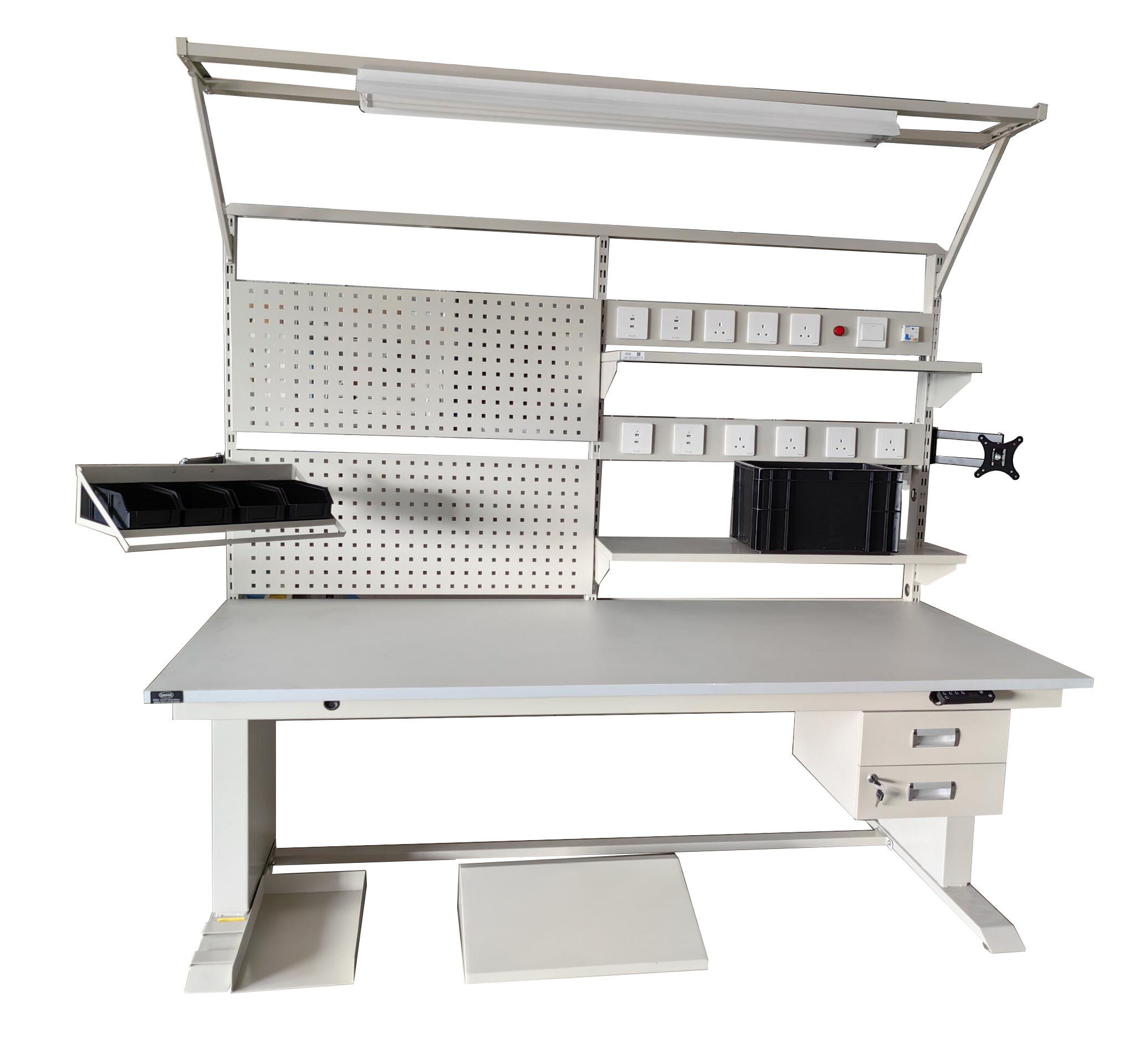Sectors throughout many industries rely on Electrostatic Discharge (ESD) workbenches to safeguard both sensitive electronic components and their reliability factors. Workbench maintenance becomes critical because it guarantees operational stability and protects equipment along with products from expensive damage. The article will explore step-by-step guidance to maintain ESD workbenches by discussing cleaning methods together with component replacement procedures as well as surface resistance measurement techniques and inclusive attachment system upgrades.
Cleaning Protocols and Component Replacements
An ESD workbench achieves its best performance through proper maintenance of cleanliness inside its areas and surrounding spaces. Clearing away dust particles and debris while maintaining ESD-sensitive item protection serves as the main purpose of regular bench cleanup.
1.Daily Cleaning: The workbench surface cleaning should start with daily application of ESD-safe cleaning products using microfiber cloths. This cleaning practice helps both eliminate accumulated dust and eliminates old work residue which could degrade the ESD-protection function.
2.Weekly Cleaning: Weekly cleaning includes more intensive service according to a scheduled schedule. The workbench cleaning process requires thorough wiping of its legs and shelves and all supporting components that are attached. An ESD-safe vacuum cleaner should be used to clean ESD mats because wiping methods by themselves will fail to grab hidden debris.
3.Component Replacements: Regular usage results in deterioration of these parts which impairs their operational quality. Manufacturers provide and visual usage indicators serve as the basis for determining the appropriate time to replace workbench components. An ESD mat's replacement frequency depends on usage patterns and environment conditions so it should be replaced after 1 to 2 years.
Surface Resistance Testing
Periodic tests of surface resistance must happen to maintain the sustainable operational effectiveness of your ESD workbench. Testing the ESD properties helps you find potential problems which enables you to respond promptly.
1.Testing Frequency: Surface resistance tests should happen at least once annually to maintain proper workbench condition. Testing frequencies need to be higher in settings that require high levels of precision and also in hazardous locations.
2.Testing Procedure: The procedure requires the use of a surface resistance meter according to the manufacturer specifications. To record the resistance value you need to place electrodes on the workbench surface. Measure the obtained value against ESD standards which specify acceptable resistance ranges from 1 x 10^6 ohms to 1 x 10^9 ohms.
3.Interpreting Results: The results of this test reveal surface deterioration when they lie outside pre-defined parameters indicating inadequate electrostatic discharge protection. It is necessary to start immediate procedures for either component cleaning or replacement when contamination occurs.
Upgrading Modular Attachments
An ESD workbench reaches maximum operational efficiency through modular attachments that provide flexibility. The functionality of your workstation alongside its ESD protection can be improved through modified attachments.
1.Assessing Needs: Begin your assessment by determining the important requirements of your workbench. The workbench needs storage solutions and lighting fixtures as well as specialized equipment holders for improvement. Review your normal workflows which involve projects with components to determine how protection factors and operational efficiency can be enhanced.
2.Selecting Upgrades: You should pick modular components which are explicitly made for ESD environments. You can improve ESD protection by installing accessible conductive shelving units with conductive coatings along with articulated monitor arms and grounded points. Every upgrade needs to meet industry-established ESD protection criteria before selection.
3.Installation and Testing: You must execute the new modular attachments installation procedures with care during the testing phase to maintain ESD protection integrity. Rigorous testing must be done on the updated workstation to make certain the new components do not introduce any weakness to ESD protection.
Your ESD workbench requires careful cleaning procedures while you need to replace components on time and measure surface resistance often and introduce selected modular attachments for maintenance purposes. The specified guidelines help maintain your workbench as a stable platform which safeguards all your sensitive electronic components from ESD harm. Your workbench’s long-term performance directly influences both the safety and quality of your workplace while needing maintenance procedures to be performed daily.







